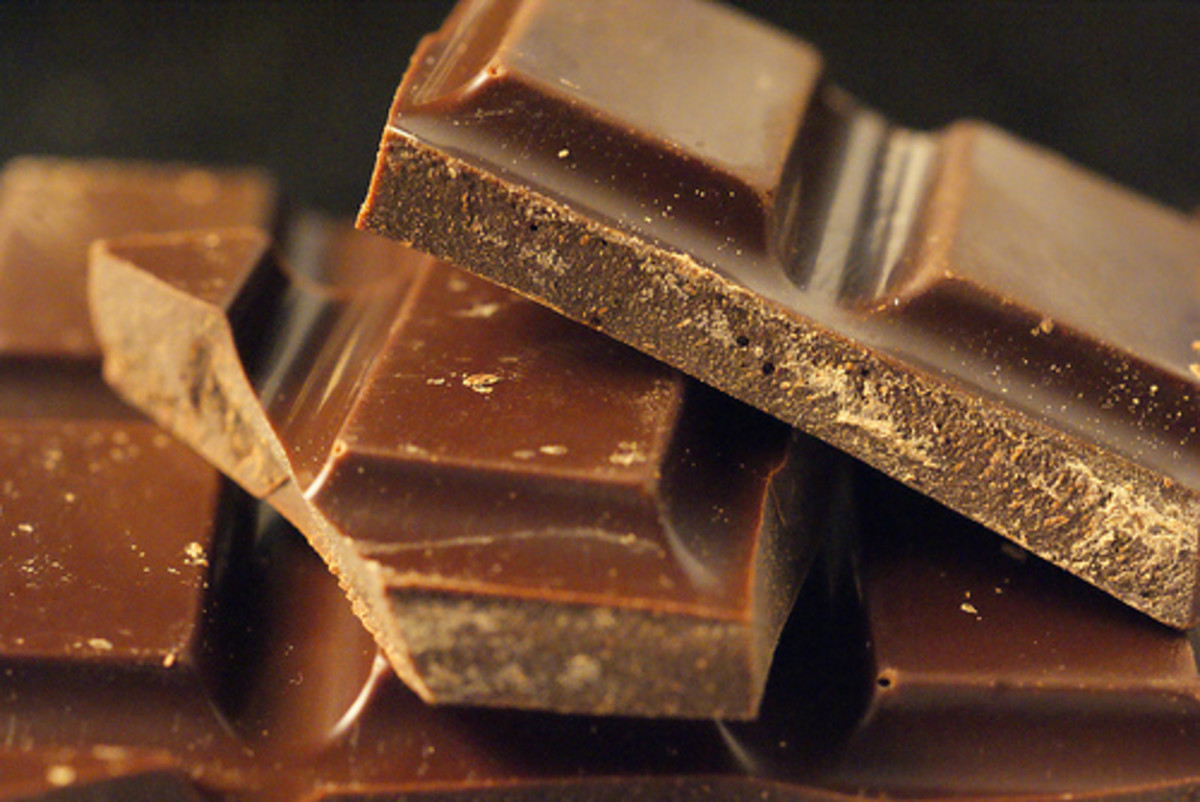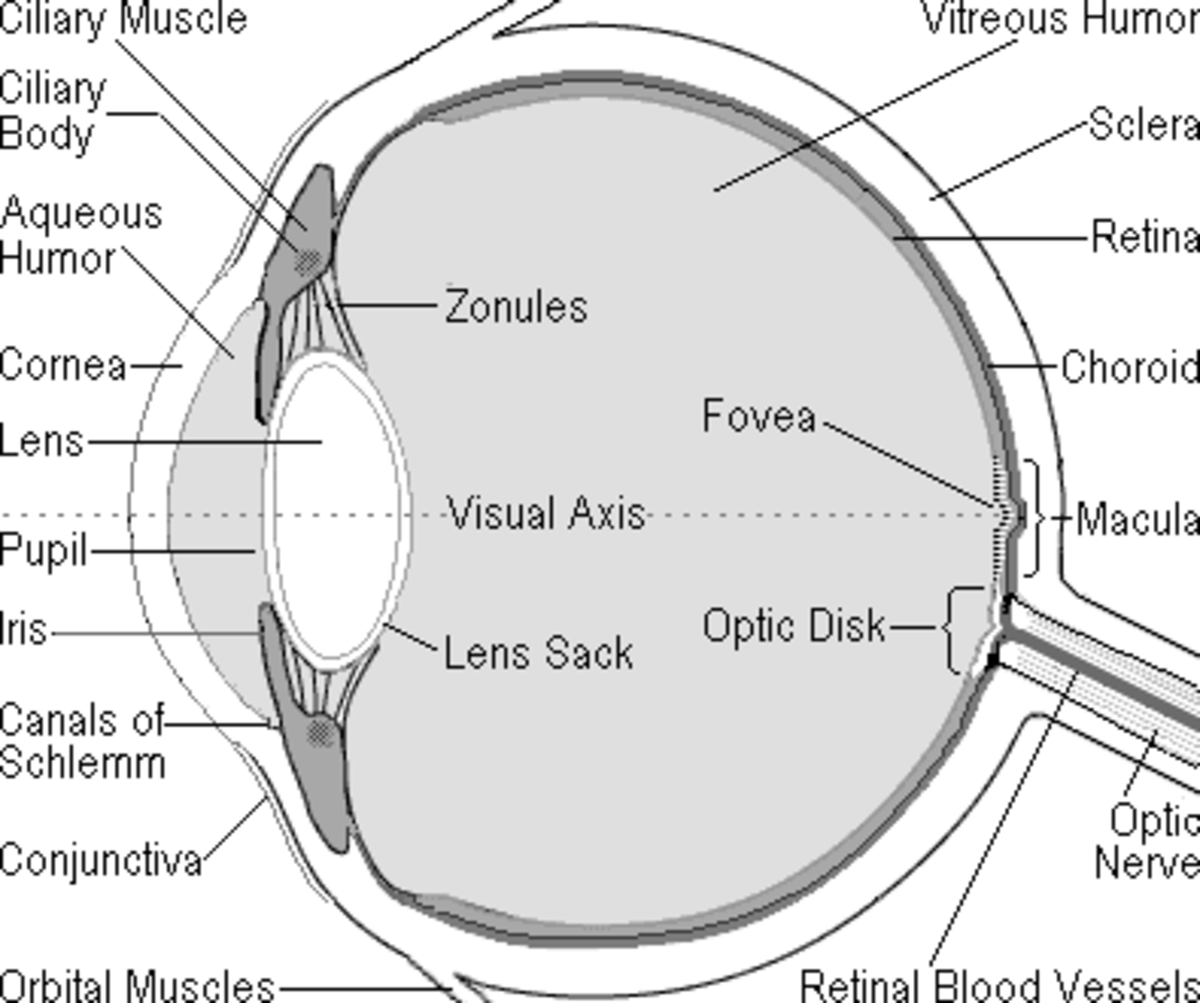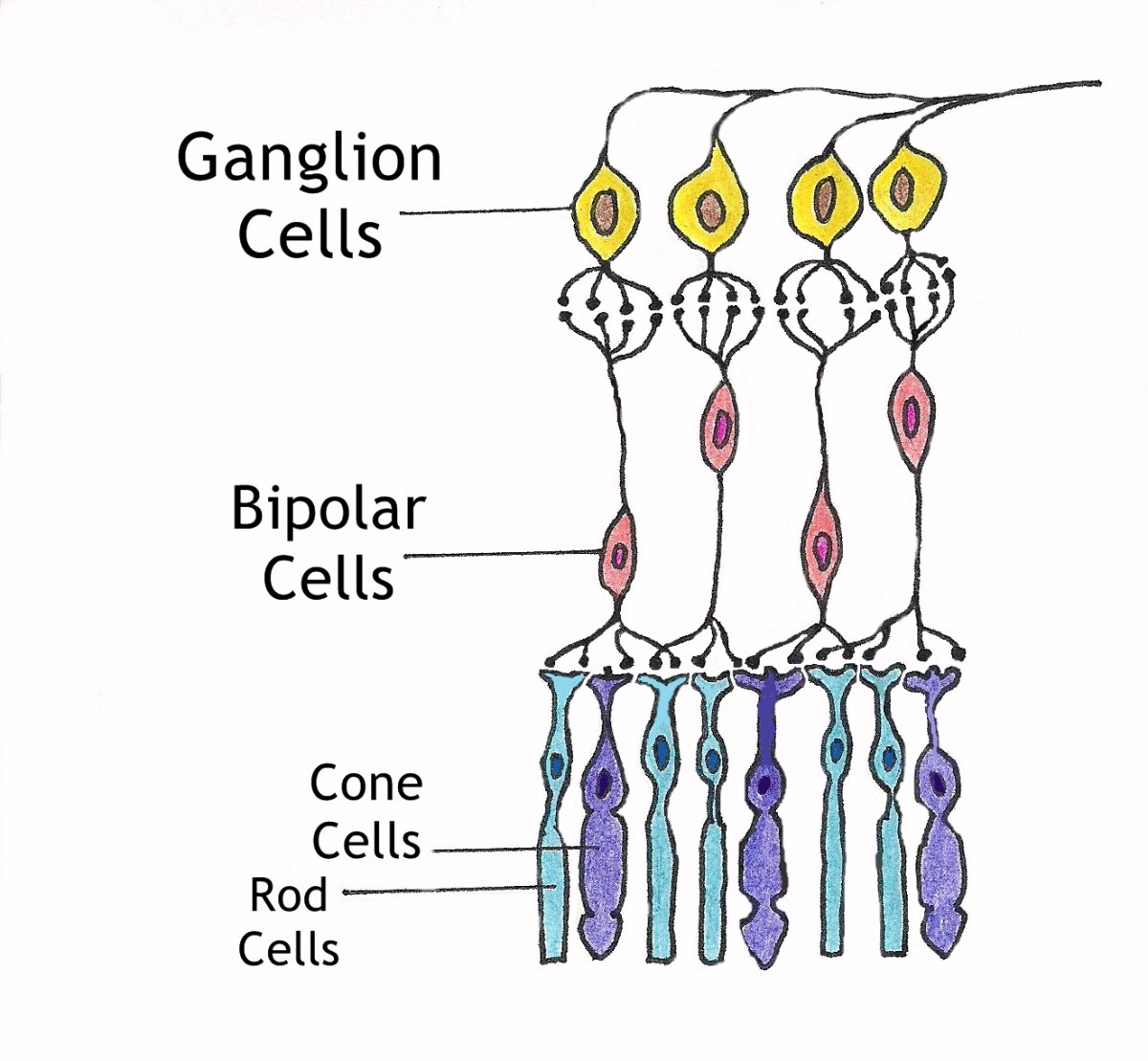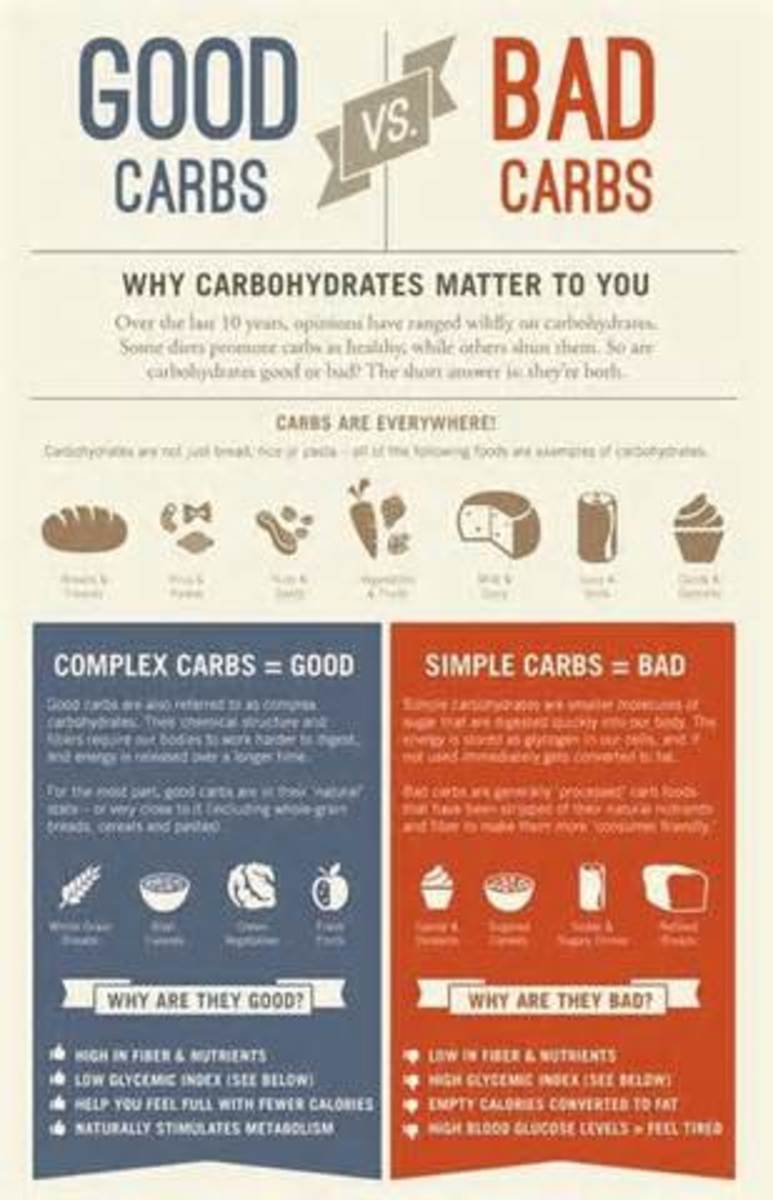- HubPages»
- Health»
- Diet & Weight Loss»
- Healthy Diets
Dietary Prevention of Eye Complications
Dietary prevention techniques of diabetes eye complications.
When light enters the eye, the retina which is a light-sensitive tissue at the back of the eye changes the light into nerve signals which are sent along the optic nerve to the brain.Without a retina, the eye cannot communicate with the brain, making vision impossible.
Diabeteic retinopathy a clinical condition occurs when diabetes damages the tiny blood vessels in the retina.
The damaged blood vessels leak fluid and lipids into the macula, which lets us see detail, the fluid makes the macula swell and blurs vision.
This is called macula edema.The disease enters its proliferative stage as it progresses where fragile new blood vessels grow along the retina and in the clear, gel-like vitreous that fills the inside of the eye. Witout timely treatment. these new blood vessels can bleed, cloud vision and destroy the retina.
The small acular arteries and veins and their branches carry excess glucose from diabetes, which impedes passage of healthy nutrients from circulating. When these vessels hemorrhage into the retinal macular area and interiorly into the vitreous gel, they cause degrees of vision loss..
In cases of diabetes mellitus, Hyperglcaemia has been shown to alter vascular functions potentially interfering with normal retinal blood.
Vitamin E helps prevent diabetic retinopathy damage by neutralizing toxic substances leaking into the macula produced by glycosylated proteins
Alpha- lipoic acid, when combined with vitamin E, inhibits the level of this degerative disease.
This antioxidant is both fat and water soluble as oppossed to vitamin E which is only fat soluble. Due to its antioxidant activities and its ablity to penetrate eye tissue, alpha-lipoic acid helps prevent age-related macula degeration as well as helps protect both the lens and retina from degeration. It has also been shown to reduce the risk of cataracts in diabetes mellitus patients.
Vitamin E, in addition to neutralizing free radicals,prevent oxidative damage,thus helping to prevent platelet clumping. This vitamin plays a role in haemoglobin production,collagen formation and the metabolism of polyunsaturated fatty acids, thereby reducing cholesterol.
E's antioxidant effects are synergised by vitamin c and beta carotene. The interaction of water soluble vitamin C with fat-soluble vitamin E broadens the range of protecton from free radical damage
Beta carotene nourishes the eye's rod and cone photoreceptors and is related to retina and nacular functioning bacause it provides day,night and sharp central vision. Its highest concentration is found in the yellow/orange and dark-green phytochemicals
DIABETES AND CARDIOVASCULAR DISEASE
patients with hypertension show numerous arteriolar vessel changes including how they cross one another,are narrowed nicked and create infarcs in the retina. though The link between diabetes and cardiovascular disease is not fully understod.Individuals suferring cardiovascular disease experience vision loss of varying severity,from hemorrhages to occlusions in the eye's blood flow.
High blood pressure can also cause these occlusions.
Dietary prevention techniques such as lowering dietary fat have had succes against the onset and progression of diabetes and related ailments.
Bilbery(vaccinium mrytillus) is a preventive treatmeant in diabetic complications.Its flavonoid component of anthocyanosides strengthens retinal connective tissue and reduces both the leaking and fragility of the occular blood vessls.
Chromium,an essential trace mineral found in whole wheat,brown rice,potatoes and brewer's yeast, help lower glyosylated haemoglobin and controll blood sigar, by maintinig glucose levels, chromium enables the occular microvasculature to maintain open chanells of blood flow and prevents diabeteic retinopathy from occuring.
Whole grains lower glucose levels and reduce the risk of ocular complications from diabetes, primarily retinopathy, but also cataracts and posterior vitreous detachments.
Diets rich in soluble fibre from fruit,beans,peas and oats are beneficial against blood-sugar variations. Diets low in fibre intake and high in glycaemic foods,including highly processed grains,instant and processed foods,and sweets pose greater risk for the development of diabetes when compared with the effects of eating evolutionary foods.
Factors such as particle size,help reduce the glycaemic index rating of whole grains,thus reducing the likelihood of an onset of diabetes.
Ginkgo biloba accelerates pancreatic function and alters or improves glucose metabolism. In addition,ginkgo reduces cellular adhesion and protects endothelial cells from hypoxia,improves vasodilation qualities.
Cinnamon's most active compound, methylhydroxy chalcone polymer,like insulin, affets protein phosphorylations in the fat cell.Bioflavanoids are known to inhibit protein kinase, therefore it is possible that cinnamon compound related to the bioflavonoids could inhibit the insulin response overcome it's resistance.
A diet rich in fruits, vegetables, soluble fiber and soy provides phytosterols,phytochemicals and isoflavones that can help lower cholesterol and maintain good blood flow through the eye vessels.
Optimal functioning of the microvasculature in the eye depends on adequate nutrients from the heart, which is their primary source. When its vessels become clogged with plaques, and they break loose and travel to the brain,a stroke occurs.
This cause an automatic visual field loss. It can cause central or branch retinal artery or vein occlusions with haemorrhages, atrophy and vision loss.
Numerous nutrients are necessary to allow proper metabolism of the cardiavasculature. this macrovasculature plays an even more critical role in the eye's micro-vasculature to prevent secondary ocular complications.
Examples of functional foods that are beneficial are sweet potatoes,carrot,mangoes,spinach,squashes and papaya.
Red yeast rice ( moascus purpureus), a chinese food and medicine, has the same reductase inhibitors found in the statin drugs to lower cholesterol. It also contains flavonoids.
Garlic (allium sativum) lowers blood cholesterol and triglycerides as it reduces the risk of deloping heart disease.
With modifications in diet and dietary supplementation, blindness caused by diabetes and cardiovascular disease can be prevented, as can secondary ocular complications such as dry eyes,nyctalopia and age-related macular degenaration.








